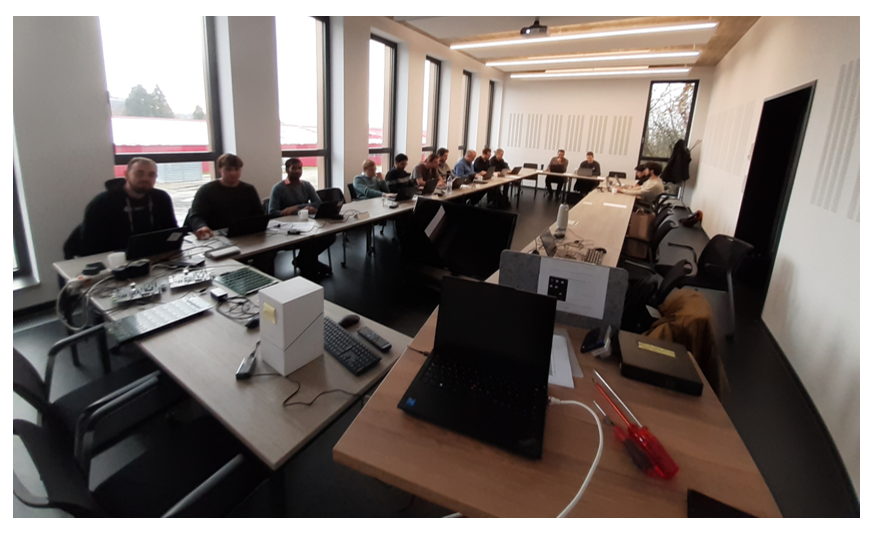SpiNNaker-Workshop on Dec. 6/7 2023
 On the 6th and 7th of December, we had the pleasure of hosting SpiNNcloud, the developers of SpiNNaker 2, for a workshop. We had 20 participants in person and 30 online. SpiNNaker belongs to the category of neuromorphic hardware. Neuromorphic hardware is hardware that attempts to mimic the behaviour and configuration of biological neural networks. This is achieved using a dedicated architecture with hundreds of densely interconnected ARM cores per board, rather than a generic CPU architecture.
On the 6th and 7th of December, we had the pleasure of hosting SpiNNcloud, the developers of SpiNNaker 2, for a workshop. We had 20 participants in person and 30 online. SpiNNaker belongs to the category of neuromorphic hardware. Neuromorphic hardware is hardware that attempts to mimic the behaviour and configuration of biological neural networks. This is achieved using a dedicated architecture with hundreds of densely interconnected ARM cores per board, rather than a generic CPU architecture.
This type of hardware can be used for neuromorphic simulations (i.e. brain simulations) using spiking neural networks. It is also a good candidate for AI/ML inference based on deep learning neural networks. Furthermore, SpiNNaker should be applicable to many other fields such as robotics, real-time image and signal processing, network simulations, optimisation problems, and any other domain that can take advantage of the high communication bandwidth and interconnectivity between the “neurons”.
 The workshop included presentations on KISSKI as well as from the neuromorphic simulation groups. From SpiNNcloud, presentations included information on the design and philosophy of SpiNNaker, followed by hands-on sessions with test boards showing a couple of different applications (the traditional MNIST character recognition task with deep learning, and the QUBO algorithm for graph segmentation as an example of a global optimization challenge). Finally, an introduction was given on how to modify the lower level SpiNNaker code to implement new types of neurons and synapses. SpiNNaker code can be written in higher level Python (with some limitations, which are actively being worked on). There are interfaces to PyNN (for neural network models) and to common ML tools such as TensorFlow and Keras. Lower level C/C++ libraries provide more flexibility at the cost of some additional programming complexity. They are currently more complete.
The workshop included presentations on KISSKI as well as from the neuromorphic simulation groups. From SpiNNcloud, presentations included information on the design and philosophy of SpiNNaker, followed by hands-on sessions with test boards showing a couple of different applications (the traditional MNIST character recognition task with deep learning, and the QUBO algorithm for graph segmentation as an example of a global optimization challenge). Finally, an introduction was given on how to modify the lower level SpiNNaker code to implement new types of neurons and synapses. SpiNNaker code can be written in higher level Python (with some limitations, which are actively being worked on). There are interfaces to PyNN (for neural network models) and to common ML tools such as TensorFlow and Keras. Lower level C/C++ libraries provide more flexibility at the cost of some additional programming complexity. They are currently more complete.
We’re looking forward to hosting a test board early in 2024 for the first users who want to develop and use the system, and to having the full SpiNnaker hardware installed in 2024. We plan to offer more workshops and training once the hardware is available locally. We will also work on sample applications and collaborate with research groups interested in the hardware.
